Almost every rider has experienced sore, aching and tingling hands and wrists towards the end of a long ride.
As one of three points of contact with the bike, the hands and wrists absorb vibrations transmitted from the tyres into the handlebars.
The makeup of the hands and wrists is delicate, so they are liable to overuse – the factor behind the most common causes of cycling pain.
If you’re suffering from sore hands and wrist pain from cycling, you’ve come to the right place.
We’ll explain the structure of the hands and wrists and what causes pain there. We’ve spoken to a series of expert physios and bike fitters, who suggest ways to prevent cycling hand and wrist pain.
What is the structure of the hand and wrists?
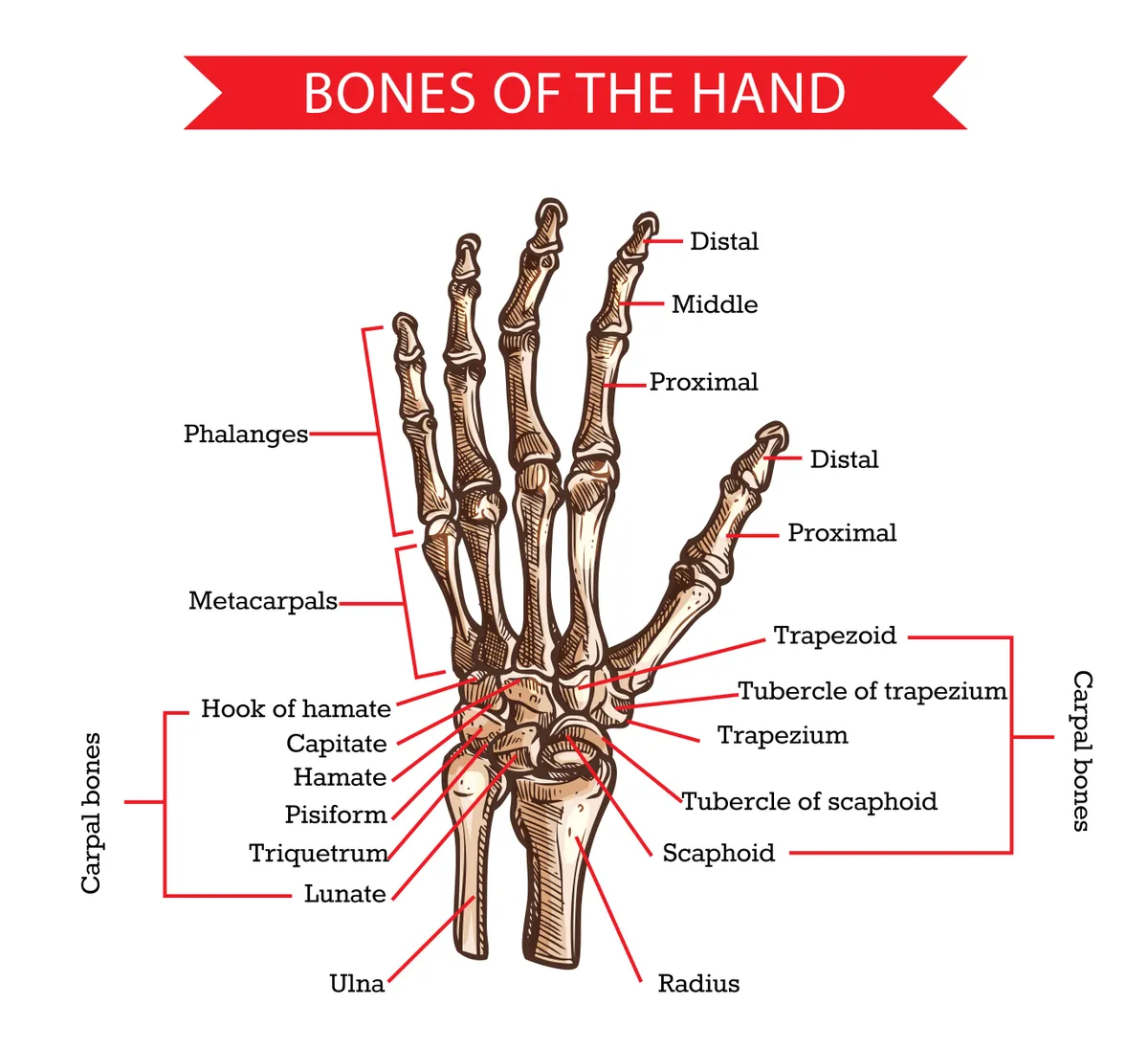
The hand and palm are formed by five metacarpal bones, one for each finger, which articulate and project from the top row of the carpal bones to form the hand and palm.
The distal forearm bones (ulnar and radius) articulate with a complex of eight bones (carpal bones), to form the wrist.
What causes hand and wrist pain from cycling?
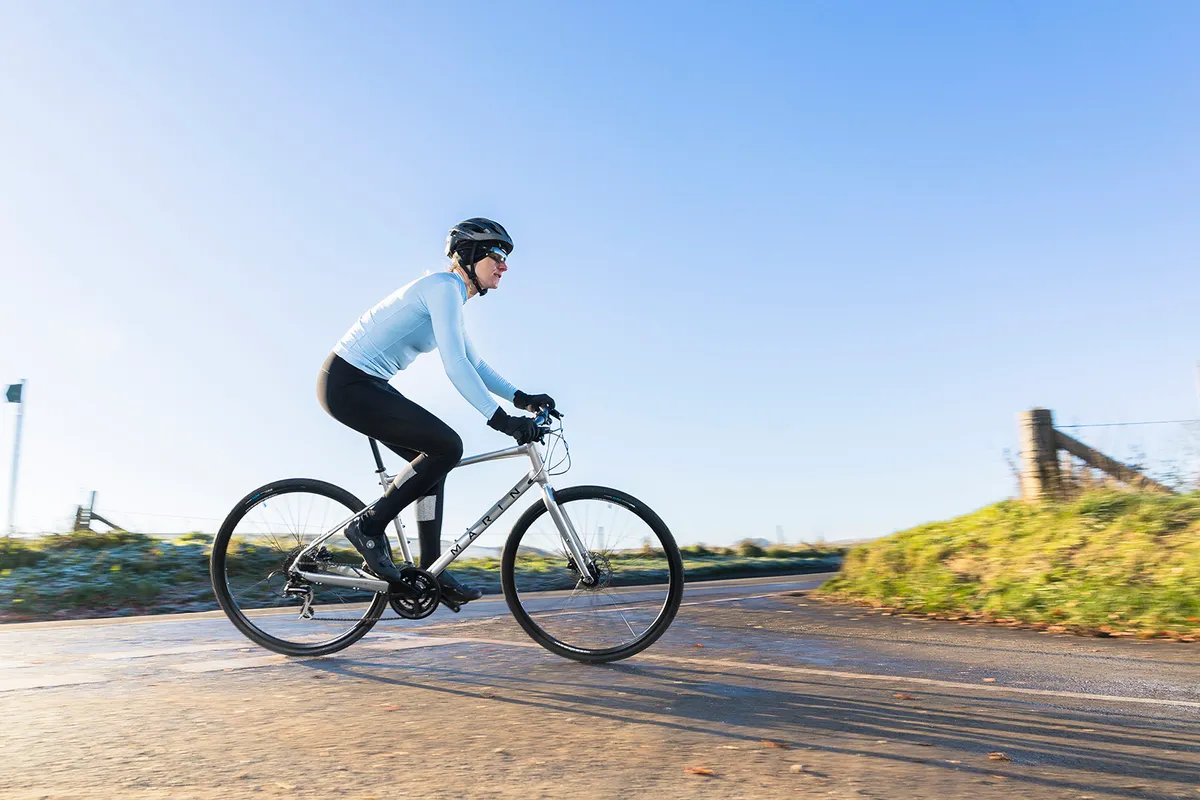
When you cycle, the hands grip the bar and, along with the wrists, support your upper body.
Hand and wrist pain from cycling happens when there is too much weight on your hands, or your hands and/or wrists are in an awkward position. This can stop force transmitting effectively through your upper limb, where larger muscles can help absorb it, and leads to a build-up of pressure on your hands and wrists.
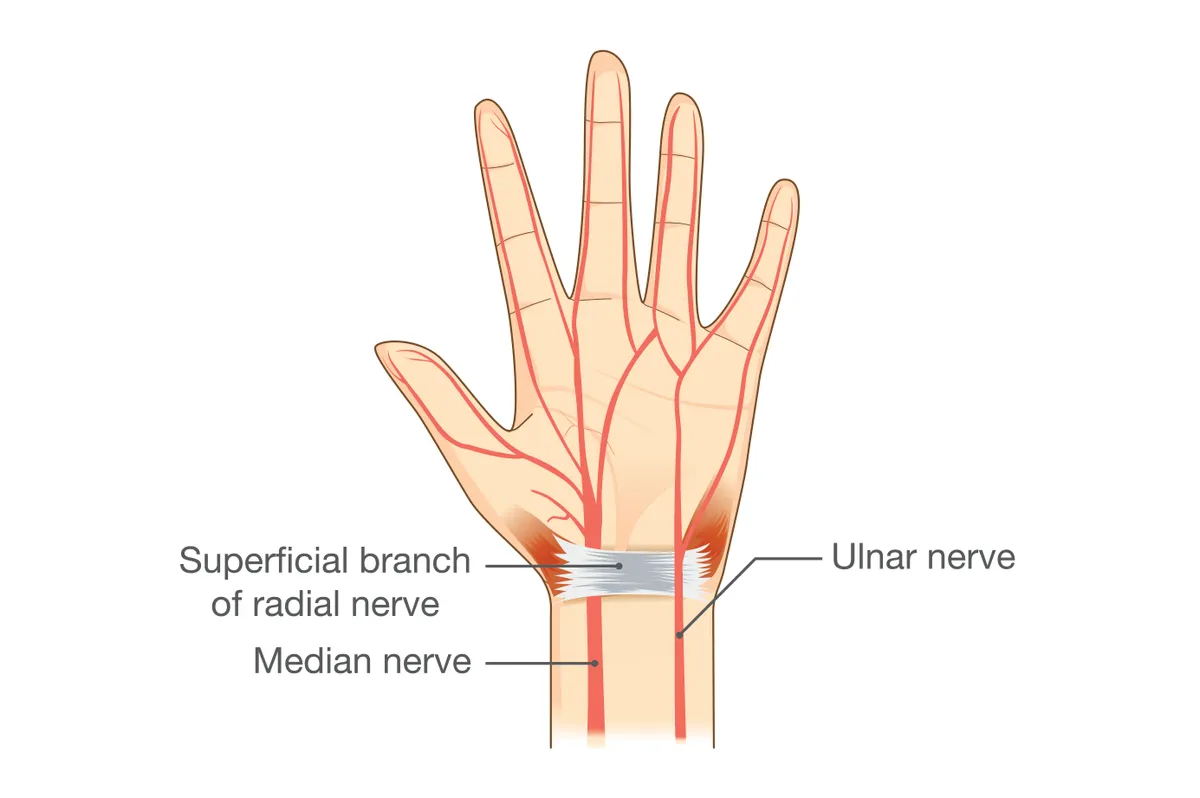
The pressure compresses nerves in these areas, which leads to the two main types of neurogenic hand and wrist pain from cycling: carpal tunnel syndrome and ulnar nerve pain (or handlebar/cyclist's palsy).
Both conditions cause aching and throbbing. Handlebar palsy, as with other kinds of palsy, causes the hands to tingle, go numb and lose function. This is because most nerves have a dual sensory and motor function.
Pressure causes pain when the sensory aspect is irritated and loss of movement happens when the motor aspect is affected.
Handlebar or cyclist's palsy
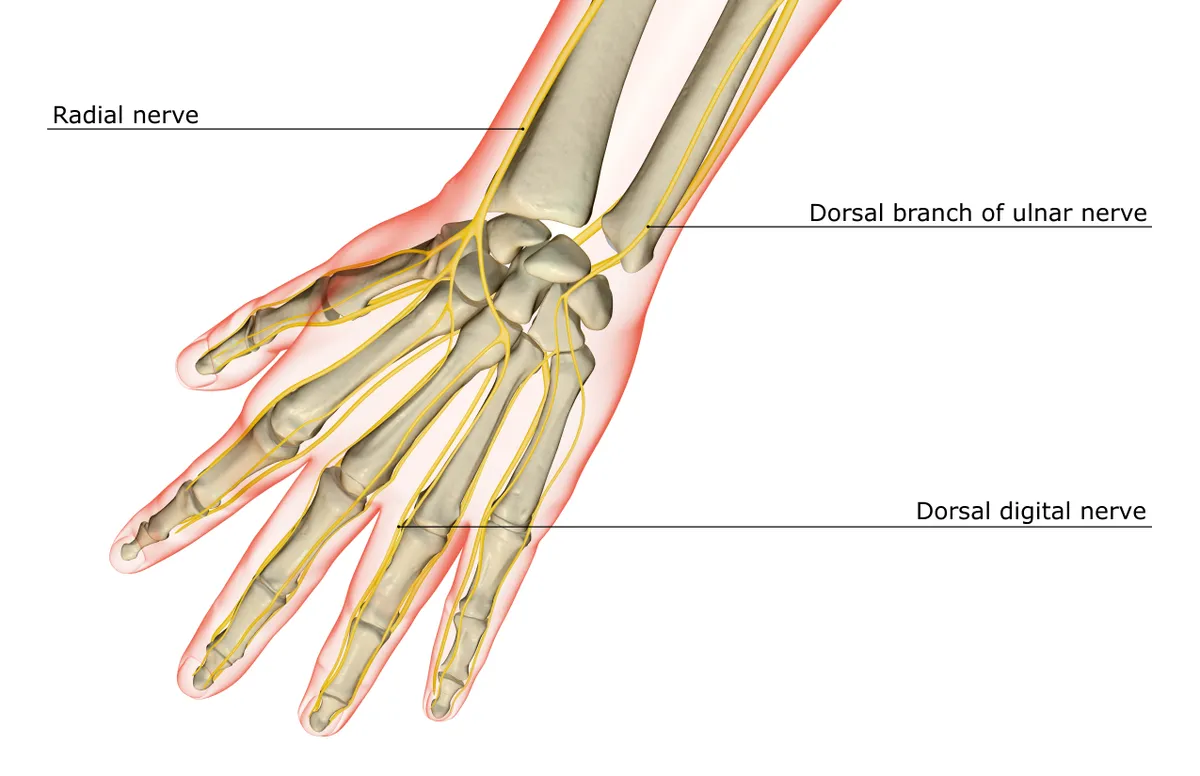
Handlebar or cyclist's palsy, also known as ulnar nerve pain, tends to be located on the underside or inside of the hand, and ring and little fingers. This is because the ulnar nerve runs down the arm through the wrist, palm and fourth and fifth fingers.
Dan Guillemette, physio at Team Jayco Alula and Team Bike Exchange-Jayco, says underlying neck issues can lead to ulnar nerve problems.
The arm nerve originates in the neck, and tight shoulder muscles can prevent the nerve from moving freely. This can hinder a comfortable position of the hands or elbows while riding.
Rather than looking to the hand, Guillemette will try to treat the root cause of the pain first. For example, he may assess if the patient’s flexibility needs work and, if so, prescribe stretching and mobility exercises.
Carpal tunnel syndrome
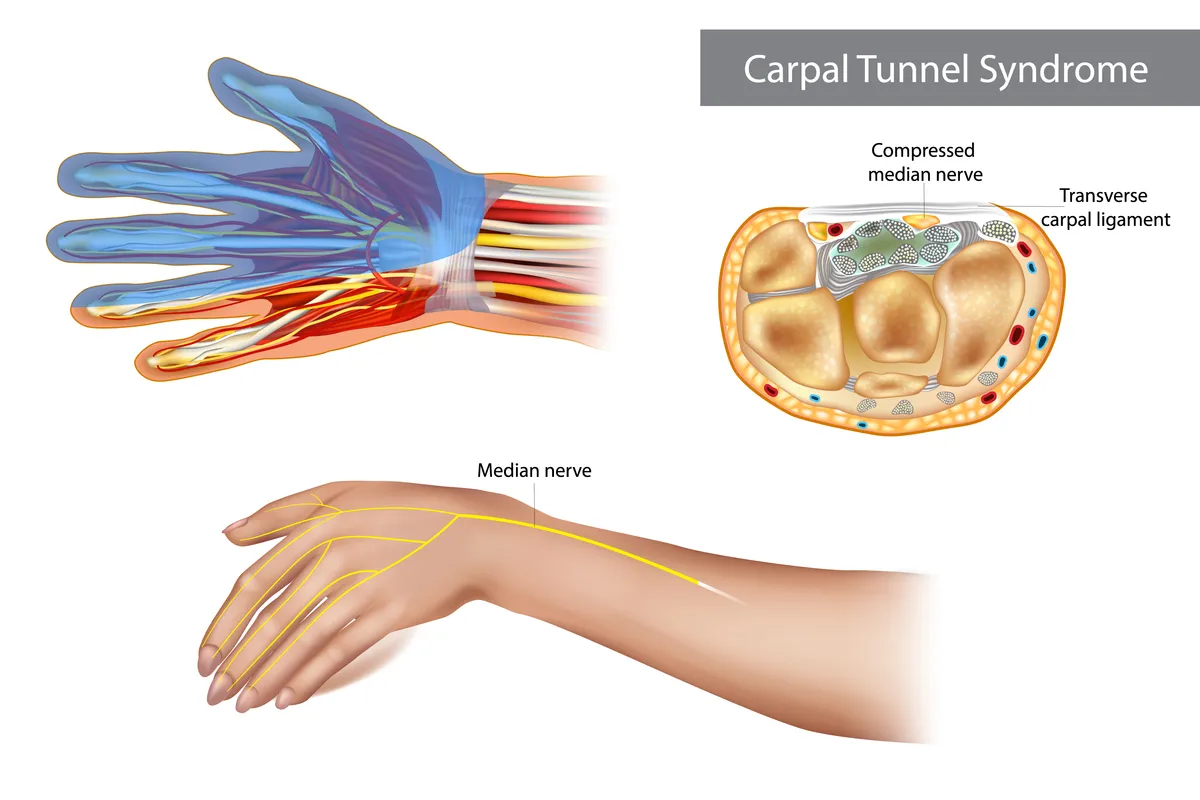
Carpal tunnel syndrome is caused by pressure on the median nerve that passes through your wrist. When the carpal tunnel is compressed, pain and loss of movement diffuses more widely, including into the thumb.
Traumatic hand and wrist injuries
It’s not just pressure on nerves that can lead to hand and wrist pain from cycling. Broken bones in the wrist, hand or scaphoid can lead to prolonged pain while cycling if the fracture doesn’t heal properly.
Guillemette recommends going for a CT scan if you’ve crashed recently and feel persistent pain around the base of your thumb and fingers.
Physio Rob Brown says: “An undiagnosed [or] mismanaged wrist fracture can lead to degenerative issues, one being death of the bone.”
Past ligament damage may require wrist strengthening through hand weight and gyroscopic ball exercises, Guillemette says.
How do I stop my hands from hurting when cycling?
Bike positioning

Ensuring your road bike position is correct can take pressure off your hands and minimise the chance of hand pain, says Bianca Broadbent, a physio at Fit Your Bike.
Guillemette agrees and says shortening reach, increasing stack height and decreasing saddle drop can take “stress, strain and tension off the nerves”. Our road bike geometry guide defines all these terms.
Setting your bike saddle too far forward will put more pressure on the hands.
What’s more, riders who aren’t sat properly on the saddle distribute more weight through the hands, increasing pressure on them, explains Broadbent. Finding the best saddle for you could help mitigate this problem.
If the hand and wrist pain doesn’t diminish once saddle position is sorted, Broadbent will look at handlebar height.
“Higher is not always better because sometimes that puts more pressure through the hands. Reach being too long or short can increase pressure,” she says.
Brown says you should experiment with tilting the handlebars forward or back. These changes can reduce compression on the nerves in the wrist. In a more relaxed position, you shouldn’t need to grip the handlebars as tightly.
All three experts agree a professional bike fit is the quickest and surest way to find the best position for your hands and wrists.
Be aware of aero
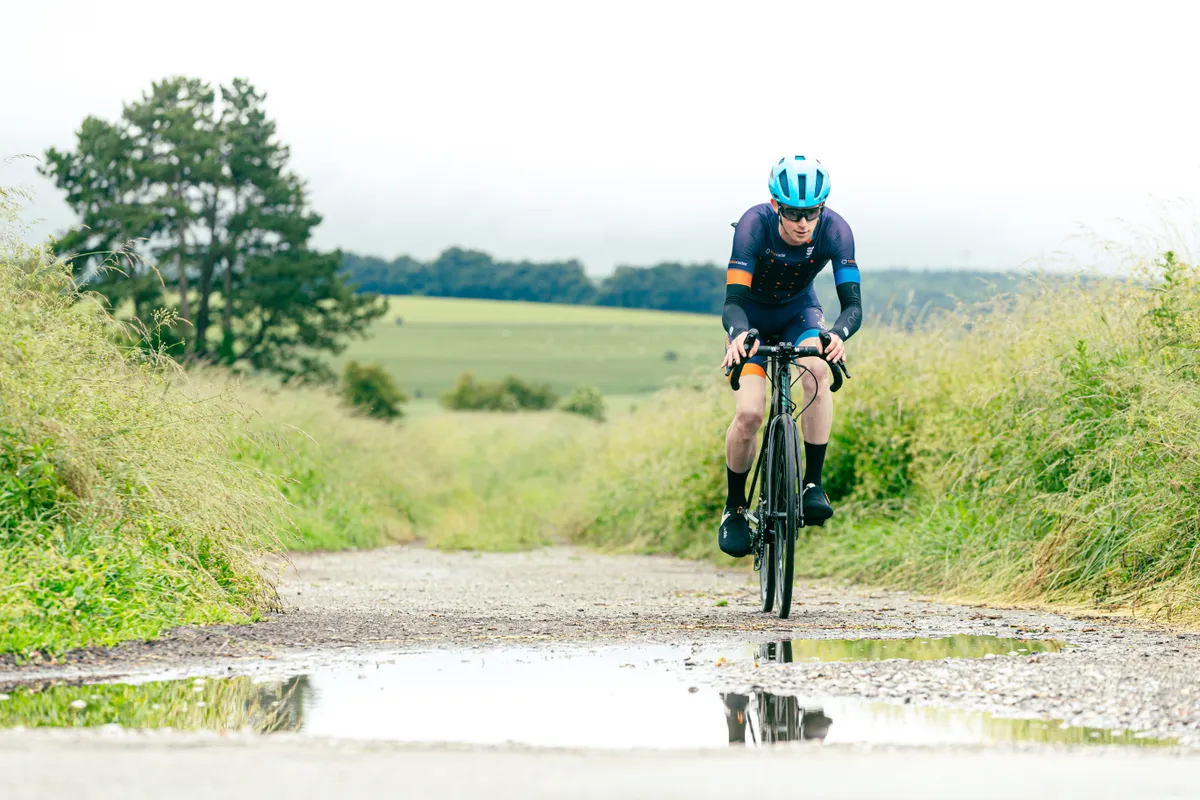
Attempts at aerodynamic optimisation may exacerbate wrist and hand pain from cycling, according to Guillemette.
“It’s not more aerodynamic if you can’t hold the position,” he says.
Therefore, if you’re susceptible to wrist pain from cycling, be wary of mimicking pro riders’ penchant for turned-in brake hoods and narrow handlebars.
Broadbent says: “Width [of handlebars] is one of the most important factors along with the angle of the hoods and shifters.
"Even if little weight is going through the hands, if your hands are put into an awkward position you could compress the structures [nerves and tendons] that will become a source of pain.”
A narrow-shouldered rider on wide handlebars or a broader cyclist on narrow handlebars could both put their hands in an unnatural position, leading to hand and wrist pain, says Broadbent.

However, Guillemette sees more hand and wrist pain caused by riders using handlebars that are too narrow for their shoulders than too wide.
For example, he says a 100kg rider is not built for a 38cm handlebar with a short, shallow drop.
“Your shoulder and neck muscles have to work harder for you to feel stable and safe,” explains Guillemette.
“You’ll be bracing all the time and then you’ll cause compression somewhere along the chain of the radial or ulnar nerve and feel discomfort.”
In his opinion, wider handlebars are less likely to provoke hand and wrist pain.
“They take tension off by giving you a wider base of support than you need,” he adds.
Equipment
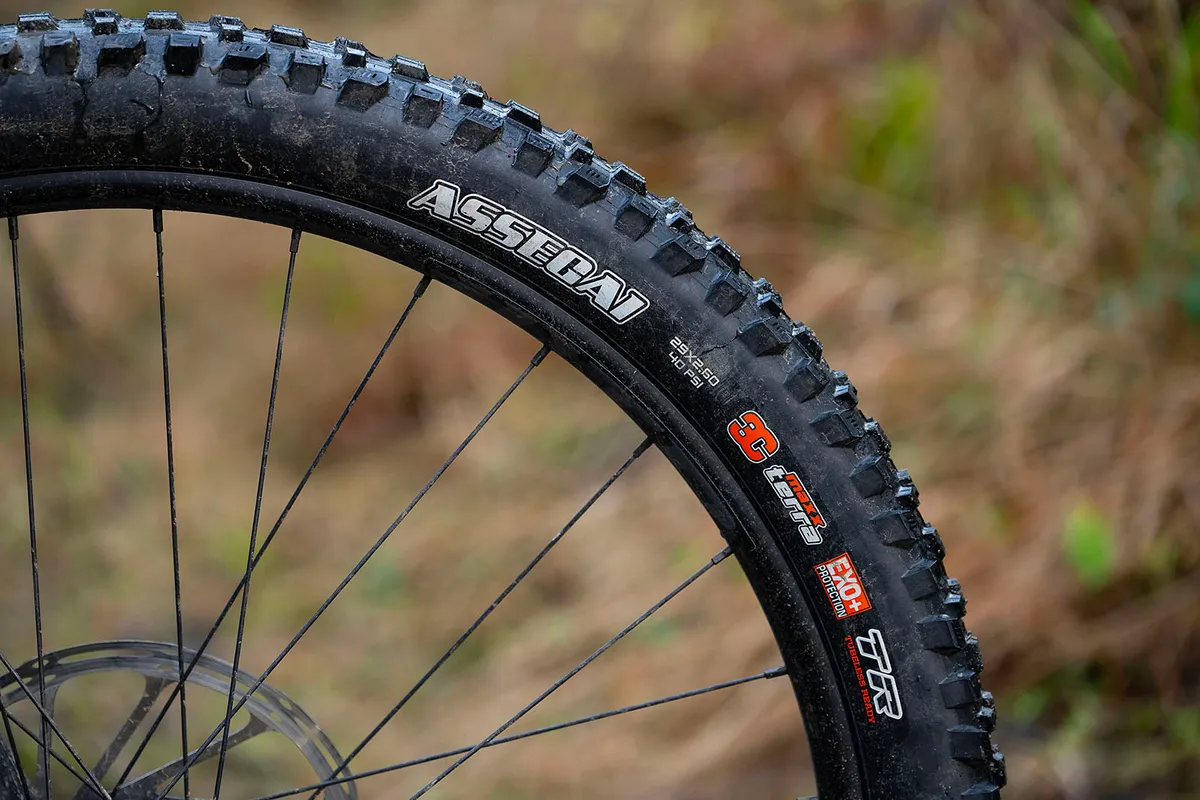
Having to absorb road buzz for hours on end causes the hand and wrist muscles to tire, tighten and ache.
A cost-free solution is finding the right road bike tyre pressure or mountain bike tyre pressure. A lower pressure that doesn’t lead to punctures (going tubeless can help with this) should dull road buzz.
While more expensive, the best road bike tyres or best mountain bike tyres do tend to be faster and more comfortable than cheaper, less forgiving options. Guillemette also recommends going as wide as you can.
Wider road bike wheels and mountain bike wheels could also be better. They can be made laterally stiffer while more compliant vertically, which should send fewer vibrations into your hands and wrists.
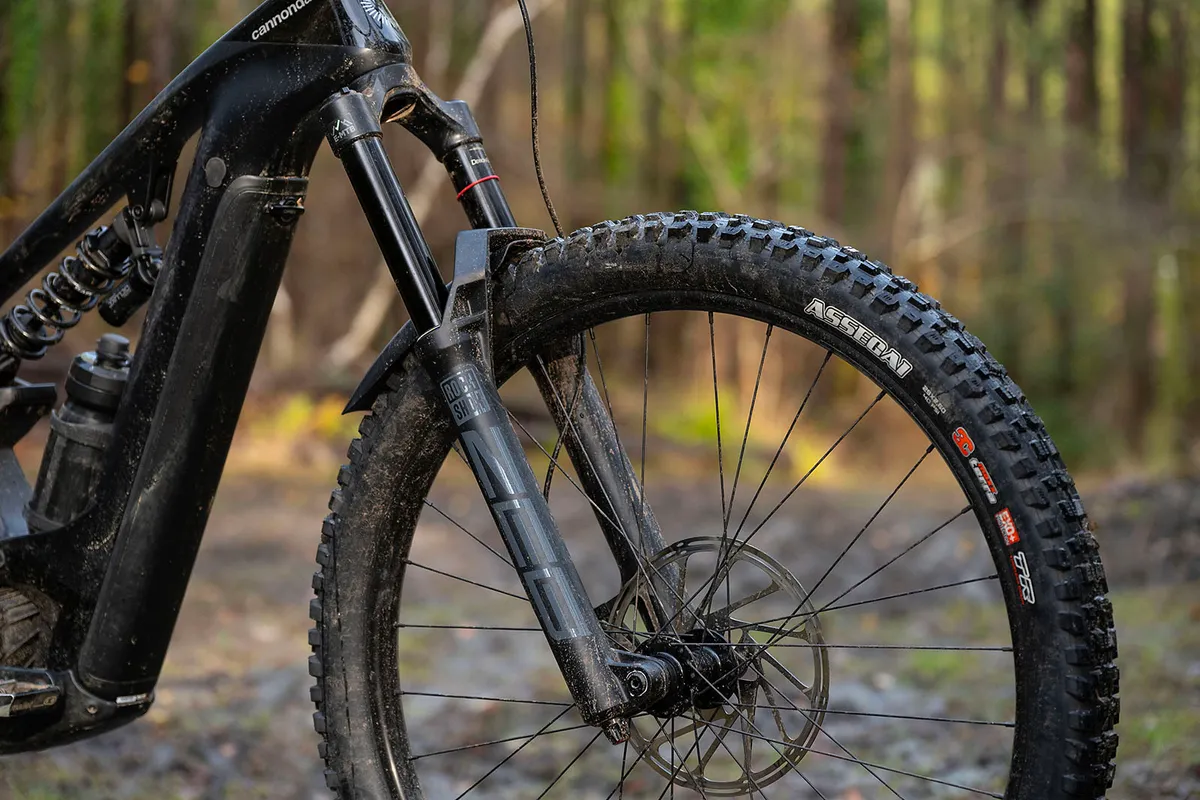
If you’re a mountain biker, investing in one of the best suspension forks or simply optimising your current mountain bike suspension setup can also relieve hand and wrist strain.
Simpler steps to reduce the 'repeated vibrational load' include wearing track mitts or summer cycling gloves. Upgrading to the best handlebar tape or handlebar grips can boost cushioning.
However, more cushioning isn’t always better. Broadbent says the optimal amount of bar tape “depends on the diameter of someone's hands because modern bar diameters are much better than on a classic bike, where the diameter is much smaller.”
If the diameter of the bar doesn’t match your hand, think about changing the diameter of the bar. You can also use bar tape or grips to influence the diameter.
For example, some mountain bikers find a 35mm-diameter handlebar (in alloy or carbon) overly stiff, which contributes to hand and wrist pain.
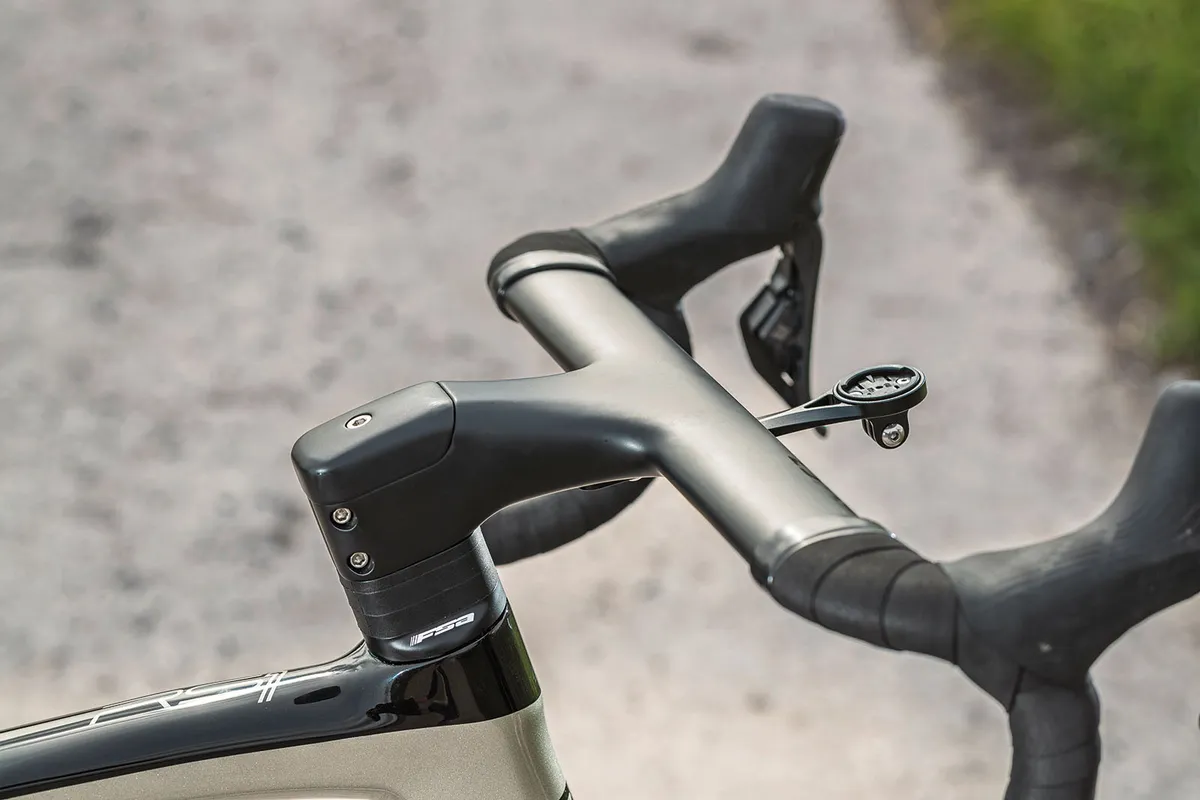
A one-piece carbon bar and stem leaves little room for adjustment, besides tweaking lever angle, so may not be suitable for all, says Guillemette.
Some riders are sensitive to changes in reach and may need to swap for a longer or shorter bike stem. Bear this in mind when buying a new bike.
Therefore, Guillemette stresses the need to assess people individually before concluding what’s causing their discomfort.
If all those options haven’t resolved your hand and wrist pain when cycling, Broadbent suggests trying a carbon handlebar or even frame.

Many of the best road bike handlebars are carbon and mountain bike handlebars are more commonly carbon these days, too. In theory, a carbon handlebar can transmit fewer vibrations to your hands and wrists.
“Sometimes that is what’s needed as a more extreme measure,” Broadbent says.
“If you have a history of carpal-tunnel issues, are quite sensitive to vibrations and have had pain in the past even when you're working at your desk, then you might need to think about all of those things,” she adds.
However, Guillemette warns adding more stiffness (through a carbon handlebar) to an already stiff carbon frame can aggravate hand and wrist pain.
Maintain good position
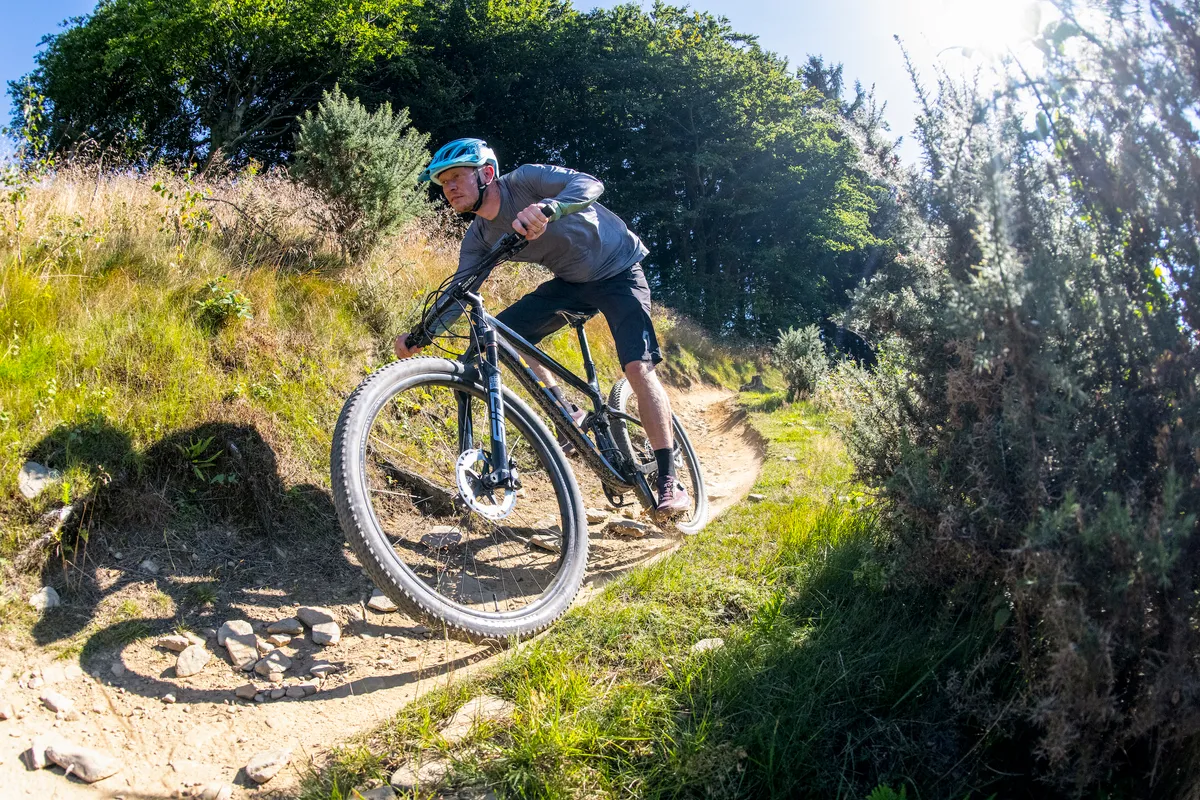
Physio Steven Berkman says wrist position can lead to problems.
“Pain often results from the wrist being in an extended position (bent backwards), with your upper-body weight going through it,” Berkman says.
When you’re riding, Berkman advises placing your hands on the tops of the bars from time to time. Here, the forearm faces downwards and the strain load is different.

A lot of ulnar or radial deviation – where your hand points at an inward or outer angle from the wrist – can also compress the tissues in your hands, according to Broadbent.
While riding with your hand on the brake hoods or drop bars, try to keep the knuckle of your index finger in line with your forearm. Less deviation should reduce strain through the ligaments and joints around the carpal (wrist) bones.
On a mountain bike, angle your brakes so the backs of your hands make a straight line with your forearms. This keeps your weight behind the bar, reduces hand and wrist fatigue, and helps you absorb impacts.
Crank up your mileage slowly

Ideally, your hands won’t be under excessive pressure if you’re well balanced on the bike, according to Broadbent.
But if you do long rides your body is not conditioned for, especially consecutively when bikepacking, your hands may fail to absorb any buzz or chatter.
“Having sustained pressure through the hands is going to cause irritation to the nerves and other structures,” Broadbent adds.
“If you’re used to a five-hour week and suddenly go up to a 20-hour week, that is a risk factor.
“The load stimulus you put through the tissue will far surpass what it can happily handle.”
The rest of your body, such as your core muscles, can also let you down. As these muscles fatigue, more weight is put through hands, says Broadbent.
So, as is often the case with pains caused by cycling, it’s worth taking a more holistic look at your body and strengthening and training your core muscles to alleviate the pressure put on your hands and wrists.
